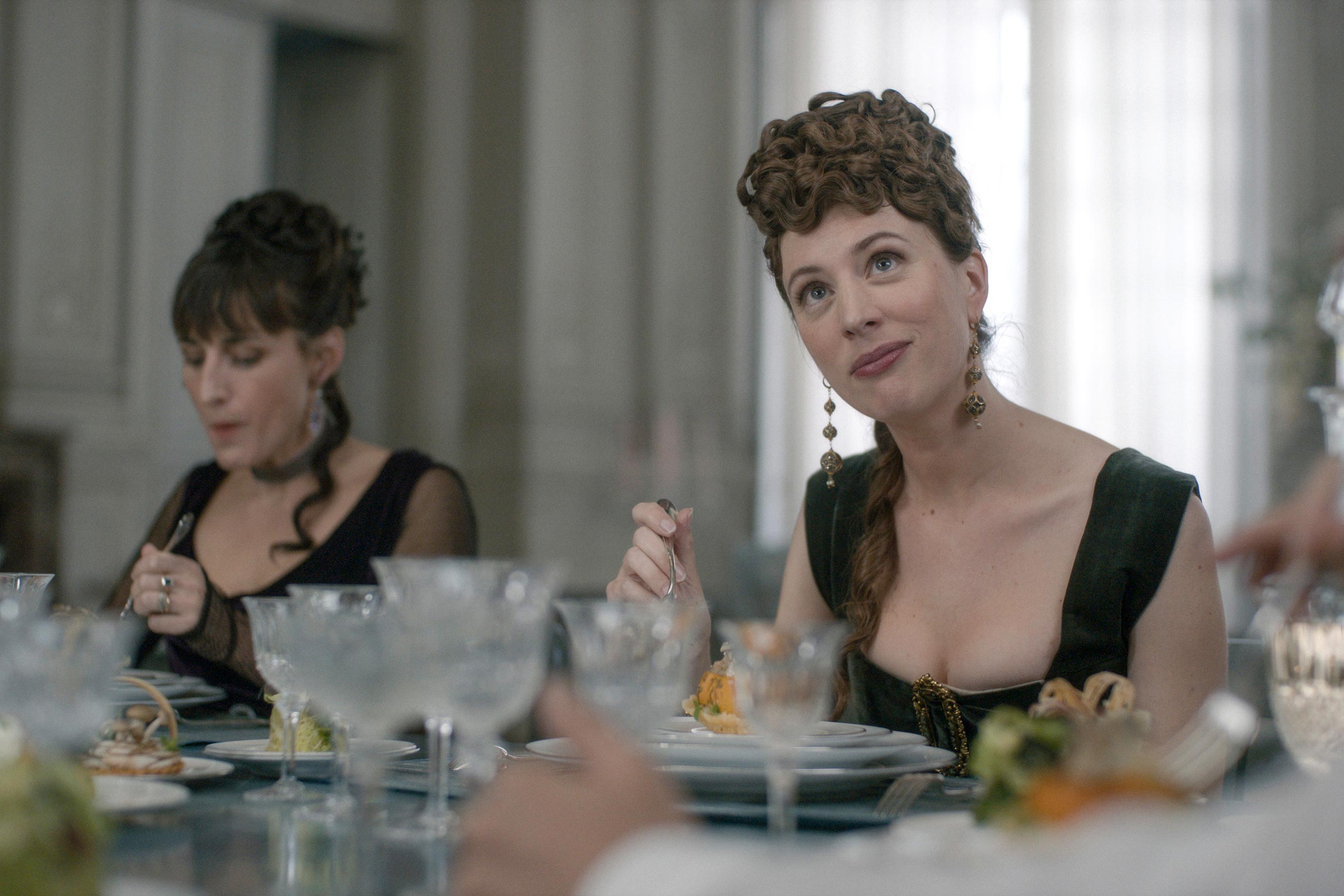What's Fact and What's Fiction in <em>Lent</em>

This article contains spoilers for Lent .
Apple TV is describing Marie-Antoine Carême , the eponymous hero of its new French biographical drama, as “the first celebrity chef,” a sort of 19th- century Anthony Bourdain, an innovator and a rebel. It's an image greatly helped by star Benjamin Voisin's Jagger-esque pout, early '90s Damon Albarn mod haircut, and cheekbones you could microplane lemon zest on. But Carême—widely considered to be the originator of French haute cuisine—was not so much a celebrity in the contemporary mass media sense as a darling of the 19 th -century elite, becoming the personal chef for, among others, Czar Alexander I and Britain's Prince Regent.
The series itself is a sort of mashup of Sofia Coppola's Marie Antoinette (period-perfect interiors combined with very modern sexual attitudes and workplace demographics), The Bear , and James Bond. This is because when not revolutionizing French cookery, Carême is sent by his employer—the wily and devious diplomat and political fixer Talleyrand—to plant or filch various documents central to Talleyrand's power games. And, naturally, gaining access to said documents seems to involve an unlikely amount of seducing society beauties.
But if Carême's activities as an undercover agent are somewhat historically dubious, his primacy as a leader is not. Here, we take a look at what's fact and what's invention in Carême .
In the series, Sylvain Bailly—a pâtissier (pastry chef) who became the young Carême's adoptive father, teaching him the secrets of pastry-making and promising to leave Carême his thriving cake shop—is overheard making anti-Bonapartist remarks and is arrested by Fouché, Napoleon's fearsome head of police determined to stamp out any dissent. Talleyrand promises to use his influence to get Bailly out of Fouché's clutches if Carême will sneak into the private quarters of the aristocrats he's cooking for and, at great personal risk, steal or copy their personal papers.
In reality, Carême was indeed taken on by Bailly in 1798 as an apprentice in his patisserie restaurant. This was a step up for the young Carême, who had been thrown out by his desperately poor family at the age of 10. (There were 15 more mouths to feed.) Fortunately, he was able to find work as a kitchen boy and general dogsbody in a working-class chophouse. Patisserie was the most highly regarded form of cooking at the time and Bailly was one of the top practitioners, with a shop that attracted starry customers like Talleyrand.
However, if Carême did take on nonculinary tasks at Talleyrand's urging (and there is no proof that he did), it would not have been to rescue Bailly. For one thing, although he felt he owed Bailly a lot—not least for encouraging him to become literate and allowing him to spend time in the nearby Bibliothèque Nationale—after three years he went to work for the competition, a celebrated pâtissier called Gendron, partially because Gendron was relaxed about Carême's moonlighting as a freelance caterer for important clients. However, by 1803, when the series has him working as Talleyrand's in-house chef and risking his life for the diplomat's schemes, Carême had in fact opened his own shop, which he operated for the next 10 years while continuing to work as a pastry cook and later as a chef de cuisine at great social and official banquets.

While delivering pastries to a brothel restaurant frequented by French soldiers, Carême learns that Napoleon, who is also on the premises, is having some kind of seizure. He whips up an herbal remedy that helps the general recover. The next day, Napoleon's aide-de-camp visits Bailly's patisserie and offers Carême a job, but the anti-Bonapartist chef refuses.
However, eager to see his protégé do well and aware of the consequences of incurring Napoleon's displeasure, Bailly urges Carême to accept, and soon Carême is working in the kitchens of the Tuileries under the direction of Napoleon's chef, the alcoholic and somewhat shambolic Laguipère, who has the hotshot pastry chef start at the bottom by peeling hundreds of onions.
In fact, Carême is not known to have ever been officially employed by Napoleon, although his services were “slow” by Talleyrand for special occasions, such as the marriage of Napoleon's brother Jérôme to Katharina of Württemberg in 1807 and, three years later, the second marriage of Napoleon himself to Marie Louise of Austria, for whom Carême created an impressive wedding cake. As the leading chef of his day, Carême is thought to have cooked for Napoleon's coronation celebration in 1804, but this is not confirmed. However, he worked for the emperor only on a freelance basis. Far from despising Laguipère, Carême paid tribute to him in his 1822 bookLe maitre d'hôtel français , writing that it was “at the Élysée Napoléon under the auspices of Messrs. Robert and Laguipère that I learned the elegance of modern cookery and the running of a large establishment. ”
Fed up with working for a boss with low standards at a job where he is not valued, Carême accepts Talleyrand's offer to take charge of the foreign minister's kitchen as head chef. Even more compellingly, Talleyrand promises to use his influence to help free Bailly.
Although Carême was indeed hired by Talleyrand as pastry chef, he was never in charge of the chateau's kitchen. Instead, from about 1803 to 1814, he worked under Talleyrand's head chef, Boucher. Napoleon had no particular interest in food, but Talleyrand was a renowned gourmet, spending an hour each morning going over the menu for the day. Before hiring Carême, Talleyrand challenged the young chef to produce menus for the entire year with no starters repeated and all taking the very modern approach of being based on local and seasonal ingredients. He achieved this, though not without considerable input from Talleyrand himself.
A Spanish writer, Manu Ruiz de Luzuriaga, maintains that Carême was never actually hired full time by Talleyrand and worked only on an on-demand basis, which gave him time to operate his pastry shop. The assertion that Carême was employed by Talleyrand, de Luzuriaga says, arises from Carême's dedicating his 1815 book, Le pâtissier royal parisien , to Boucher, “controleur de la Maison de Talleyrand” and listing his own position as “chef de bouche du prince de Talleyrand” without making it clear he was strictly a consultant chef de bouche.
Talleyrand's predilection for a good banquet was motivated by more than his love of food. He saw the grand, haute cuisine–style service as an opportunity to pick up useful gossip from dinner guests. Footmen/waiters were responsible for pouring drinks, removing empty glasses, and ensuring that guests received their courses at the same time, all the while keeping their ears open. The next day, the waiters scrupulously reported to Talleyrand what they had overheard at dinner. This may be the kernel of the show's conceit that Carême doubled as Talleyrand's spy.

In an effort to visit Bailly in prison, Carême, who has seen Talleyrand's young illegitimate daughter at the house, sends a note to Fouché confirming her existence. Sure enough, Fouché soon arrives to lecture Talleyrand about the immorality of the foreign secretary's having a love child, especially when said foreign secretary is a former bishop, and to pressure him into marrying his long-term partner, Catherine Grand—the last thing Talleyrand wants. A furious Talleyrand fires Carême and promises to blacklist him. Carême says he can put everything right if he can cook for a party Josephine is throwing. Almost every dish Carême provides is prepared with lots of alcohol, especially the dessert, and as the guests get increasingly drunk, the party degenerates into an orgy, with attendees having sex right in front of the wife of the most powerful man in France. Carême himself seduces Josephine, makes sure they are discovered, then blackmails her into adopting Talleyrand's position on divorce reform in the civil code Napoleon is currently writing.
Although this scenario is possible, Josephine's borrowing Lent for anything other than to create boozy desserts for a party is highly unlikely. As a not particularly rich, not particularly well-connected divorced mother of two during an especially dangerous and unstable period (the French Revolution and its immediate aftermath), Josephine made the most of her assets as a beautiful woman and accomplished networker to gain the protection of powerful men. In the interim between the execution of Robespierre and Napoleon's ascendancy, she gained a reputation for extravagance and decadence as the lover of Paul Barras, the commander of the Army of the Interior and the police, known for his high-rolling lifestyle.
While Josephine certainly led a sophisticated life, there is no evidence for her hosting or permitting orgies. This rumor is partially the result of anti-French propaganda by British cartoonist James Gillray, who created an 1804 drawing depicting Josephine and the wife of another powerful man dancing naked for Barras at a party. The grain of truth behind the slurs was that once a week Josephine would throw a lavish party for Barras and his friends, with large amounts of meats, flowers, and exotic fruits—a display that did not go down well when ordinary citizens were finding it hard to make ends meet, giving rise to rumors of other forms of hedonism. Clearly, slut-shaming a woman as a political weapon to get to a powerful man is nothing new.
At a party where Talleyrand really needs to impress, Carême unveils his new creation, which doesn't even have a name until the end of the event: the vol-au-vent, or “flight in the wind,” because of its lightness.
This is true. Carême invented not just the vol-au-vent but the croquembouche and
mille-feuille, as well as codifying the four grand sauces—béchamel, velouté, espagnole, and hollandaise—that are the foundation of French haute cuisine.





